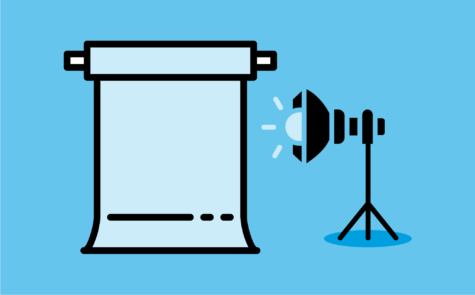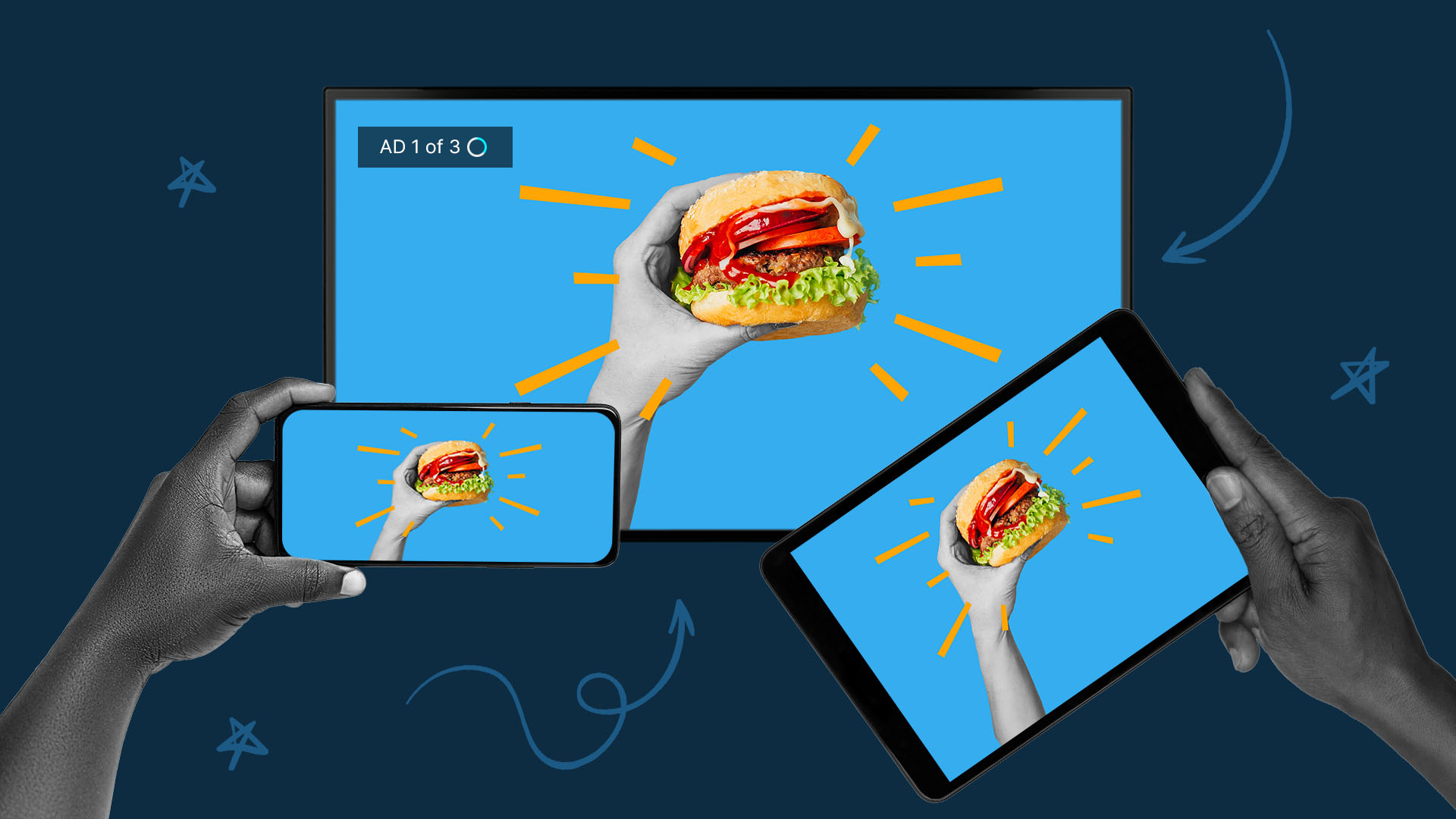Video Production Costs: Pricing & Rates Explained

In an ever-evolving media landscape where audiences consume video content at unprecedented rates, it’s vital for brands to leverage video advertising to stay ahead of their competition. But whether you’re a digital marketer for a small business, a CEO at a Fortune 500 company, or just a curious consumer wanting to know more about the content you crave, you’re probably asking yourself: how much does video production cost?
The problem with that question is there is no easy answer. We have a shared misconception that video marketing production costs an arm and a leg. And historically, that was right. Over 15 years ago Automotive News stated that the average cost to produce one 30-second car commercial was over $500,000 dollars. That’s a lot of money for just one ad. We’ve been ingrained with the notion that a video needs to be as slick as a commercial during the Big Game to be effective. But that’s not the case anymore.
What this perception fails to account for is how multifaceted video marketing has become in our current digital era. Video ads aren’t just the big and brassy commercials you see during primetime TV or during CTV marketing campaigns. They are also the quick bursts of content that stop your thumb as you scroll through Twitter and Reddit, or entice you to click while watching your favorite YouTuber. These ads are bite-size not only in length but cost too.
That said, you don’t need a six-figure budget to produce a broadcast-quality ad anymore. With recent advancements in technology and an emphasis on streamlining the production process, the cost for premium commercials has dropped considerably. Simply put, in 2021, you can do more with video ads than ever before, and at a fraction of the price.
The short answer is this: there isn’t a set price for how much a video ad costs. Video production costs are completely determined by the concept and goals of your campaign. In order to give you a high-level understanding of the costs associated with the video production process so you can start gauging the budget, we’ve identified some of the key cost drivers you need to know before embarking on a video marketing campaign.
RELATED: Video Marketing Strategies: Create Marketing Videos the Right Way
Cost of Video Production: Things to Consider
The visual differences between a live-action and an animated video ad couldn’t be more apparent. But when it comes to the actual video production process, there are far more similarities than you may imagine. These are some of the standard cost drivers shared across the spectrum of video types.
1. Video Marketing Campaign Goals
Your campaign goals are one of the most important factors in determining the overall cost of your production. Are you looking to drive traffic to your eCommerce store? Do you want to raise awareness for your brand as you enter a saturated market?
Determining these KPIs will help you decide what type of video you want to produce, the platforms you want your creatives to run on, and how many versions of the video you’ll need to generate to make the greatest impact on your objectives.
2. Concepting
Hand in hand with your campaign goals, thinking conceptually about how you want your video to look and feel is also an important cost-driver. Concepting is when you begin ideating the visual appearance, tone, and narrative approach of your ad.
This ad from Rory takes the viewer on a narrative arc while demonstrating their product in an authentic way.
Your concept will determine everything from your shoot’s location, if you’ll require any special sets or props, as well as the kind of talent and production crew you’ll need to hire. These key factors you surface during concepting will influence the final cost of video production.
MORE TIPS: How to Turn an Idea into a Video Ad: Step-by-Step
3. Scripting/Storyboarding
Scripting is exactly what it sounds like: writing the dialogue or voiceover for your ad that sells your product or service. A compelling script is the meat of your commercial’s message.
Storyboarding is when an artist creates a visual breakdown, shot-by-shot, of the individual scenes in your video. While storyboarding is vital for an animated ad, it isn’t always necessary for a live-action commercial, though we highly recommend it.
Accurate storyboarding can help save time and money by giving directors and cinematographers a strong visual touchstone of the shots they need to capture in a shoot day. Scripting and storyboarding often require artists and writers with unique skill sets that can affect the bottom line of your video marketing production budget.
This ad from Native shows how a strong script can make for a quirky, and engaging concept.
4. Talent
The on-screen and off-screen (voiceover) talent you need is determined by the concept and campaign goals of your video advertisement. This talent can range from professional actors and models, to real-life customers and even animals.
Each kind of talent comes with its own unique cost drivers, from handler fees when working with animals to the day rates of professional union actors. For example, the pricing, or rates for SAG-AFTRA actors—begin at $335 a day, and can vary from contract to contract.
This ad from Each & Every shows the relatability and authenticity UGC-style talent can inspire.
5. Location
The location of your production will be determined by a number of factors from the visual look and narrative arc of your ad, to the video type you choose. Animated and stop motion video ads can easily be created in a home or professional studio, while live-action commercials often take place on location, or in outdoor settings.
The locations you choose will also affect the setup times for your production. If you are creating a live-action video, three scenes that take place in three unique locations will take longer to shoot than three scenes in one location. This is because, for each individual location, the crew will be required to set up lighting, audio, and camera equipment multiple times. The more locations you shoot, the costlier your ad will surely become.
This ad from MoneyLion is an example of how polished, and dynamic, a non-traditional location can look.
6. Production Crew/Equipment
The type of video you choose will determine the kind of production crew you’ll need. For example, a live-action production crew requires camera operators and sound technicians that you wouldn’t necessarily find on an animated production, and vice versa. An animated commercial probably won’t need to budget for transportation services to ferry talent to and from the set, but you likely will need to hire specialized artists, like 3D modelers, to bring your animated characters to life.
Similarly, each type of video production will require its own unique equipment. The standard gear needed for live-action production, like high-definition cameras and lighting equipment, won’t be the same as an animated video. Social ads, like a UGC-style testimonial video, can even be shot from a smartphone without needing a professional camera. Content makers will typically have their own personal equipment kits, but be aware that splashier videos may require special tools that can only be rented.
7. Post Production
After a video is shot, all of the footage—or style frames in animation—come together in a final product through post-production editing. The major cost-driver in post-production is editing.
Depending on the amount of footage captured or animation produced, it can take anywhere from two days to two weeks to go from a rough cut to the final cut of your video ad. The rough cut is an assemblage of scenes that give you a rudimentary idea of what the video will look like before graphics and sound is finalized. The final cut is just that: the finished product, polished and ready for air.
The more footage or animation that you have, the longer the editing process will take, which can increase not only the production cost but also the turnaround time for your ad.
Learn More: Social Media Video Ad Specs & Placements Guide
Unique Production Costs by Video Type
Three of the most common video production types are live-action, animation, and stop-motion. While they all share the cost-drivers listed above, each type comes with its own unique slate of production requirements that can greatly impact video production pricing.
Live-Action
Videos that use real people and environments to communicate a message come with a spectrum of unique complexities based on the size of the production. Glossy, broadcast-quality commercials, for example, may require a larger crew which can significantly increase the budget, whereas a simple User Generated Content (UGC) style is comparatively low-lift and can sometimes be shot remotely with a single actor.
Your concepting will define how polished your videos can be, which will impact your overall production costs. We define a video’s polish by five distinct categories:
- Basic UGC: Talent self-shoots video from their phone in an everyday location
- Premium UGC: Gives the impression of basic UGC, but with a solo videographer shooting talent from a home studio, or on-location, without any special editing required.
- Basic Commercial: Small cast and crew with standard equipment and simple edits, shooting typically on-location, or in a home studio.
- Standard Commercial: Everything you want from a basic commercial, but with more talent, more experience, advanced gear, and an elevated edit.
- Premium Commercial: All the bells and whistles you anticipate from high-gloss brand commercials, with the top-of-the-line talent, crew, location, and gear.
This spot from Hawthorne perfectly illustrates how professional and polished premium commercials can look.
Rates & Pricing: A general estimated cost for a live-action video can range from $1,000 (a single maker shooting UGC content with their phone) to upwards of $50,000 or more (a major scale broadcast-quality spot).
Unique cost-drivers to expect for live-action video productions can include:
- Sets: Since live-action commercials are fictional representations of real life, you will need to ensure that your set looks as realistic as possible. If the narrative of your commercial takes place in an apartment, the physical location must look lived-in and authentic. This could range from gathering furniture to building out a living room or creating personal effects like family photos that are tailor-made to your production. If you have a larger budget, it’s in your best interest to hire an Art Director whose creative eye and attention to detail will make sure your set looks real, and not like an IKEA showroom. All of these factors will impact your budget and production schedule.
- Wardrobe, Hair, and Makeup: Your concept and narrative arc will also dictate the wardrobe, hair, and makeup requirements for your production. Higher concepts may call for a designer to create or rent a special costume, which can take significantly more time and money than it would be to use everyday street clothes. Simple hair and makeup are relatively inexpensive to apply, but if you want your commercial to feature a zombie, you’ll need to budget for a special makeup artist who can bring the undead to life without the design looking subpar.
Animation
Animation is an incredibly creative tool that’s one of the most flexible styles of video production because it allows your ad to be as simple or imaginative as you want. It’s a great way to showcase intangible products, such as apps or services.
But because you aren’t working with a typical production crew, you face numerous cost-drivers that you wouldn’t find on a live-action shoot.
Rates & Pricing: A general estimated cost of an animated video can range from $800 to upwards of $45,000, depending on the complexity and length of your concept.
Unique cost-drivers to expect for animated video production can include:
- Character Design: Animated human characters are a great way to bring relatability and personalization to your ad. However, using human figures can impact your production schedule because they are far more complex to design than animated products or animals. Identifying opportunities to use non-human characters can be a simple solution to remaining budget conscious with an animated commercial.
- Animation Editing: You can’t edit an animated ad for platform optimization in the same way you can a live-action commercial. Considering how animation tends to flow seamlessly from one scene to the next, changing aspect ratios after the animation has started, or trying to re-organize animation to cut it from 30-seconds to 15-seconds can quickly inflate your budget. You want to make sure that you accurately express your concept and campaign goals in pre-production so you don’t run into costly issues in the post-production process.
Stop-Motion
Stop-Motion videos are comprised of still photos that shift in rapid succession to create the illusion of flowing movement. They’re an amazing way to make live-action characters or objects do things only animation might accomplish.
This video type can be tough and time-intensive, requiring specialized artists you won’t find on any other production. Still, they are a surefire way to catch eyes and get shares, especially with product-focused advertisements.
Rates & Pricing: A general estimated cost for a stop motion video can range from $1,500 to upwards of $5,000 or more, depending on the complexity and length of your concept.
Stop-motion is a super cool technique that turns photos into eye-catching, satisfying videos.
Unique cost-drivers to expect for stop-motion video ads can include:
- Complexity of Motion: Creating a stop motion video is already a complex task that can be even more labor and time-intensive if you want larger dynamic movement. A product spotlight video may just require simple animated movement, while a video that has “magic moments” like those featured in the stop-motion tutorial above will take artistry, and time, to capture.
- Length: Because every frame of a stop motion video has to be manipulated by hand, the length of your advertisement will determine how many shoot days you should budget for. Quick 6-second unboxing videos may only take one to two days to shoot, while longer marketing ads will require additional days. A longer video also translates to more individual shots, which will greatly impact the video production timeline for editing in post-production.
Need help making videos? See how our video production platform can help your business.
How to Keep Video Production Rates More Affordable
As you can see, there is a wide array of pricing factors to consider that will impact every video style and format you choose. That being said, there are ways you can stay budget-conscious when planning video production to make it more affordable.
Repurposing Existing Assets
One of the best ways to keep video marketing production costs down is by repurposing assets through post-production editing. This means that you are taking existing footage or stills from previous campaigns and editing them to make a brand new asset.
Post-production editing is a great option if you want to use the same creative assets on different platforms that only require simple resizing and length cutdown. You can also rework messaging on existing creative by changing on-screen text or adding a new voiceover.
Through post-production editing, you can also create Cinemagraphs and Motion Stills. These video types are single photos animated to add texture and personality to an image. Both Cinemagraphs and Motion Stills are particularly successful for product marketing and eCommerce as they can showcase your offering in a dynamic way a static image never could.
Post-production editing does come with its own unique cost-drivers that depend on how many raw assets you provide to how many deliverables you want.
Rates & Pricing: A general estimated cost of post-production editing can range from $700 to upwards of $3,000.
Bundle Your Video Production
You should plan to capture all of the footage you might need for all of your campaign’s video assets, including multiple aspect ratios or different talent, in a single shoot.
This takes some planning and organization at the top of your project. Identify as many production factors as possible before you shoot including the platforms you intend to run on, the concepts you want to produce, etc. Then, craft an exhaustive shot list to ensure that you capture every bit of footage you’ll need.
The payoff is worth the time investment. Bundling assets like this will keep your production costs down by eliminating the need for reshoots or new animations.
Run a Multivariate Testing Plan
For performance marketing, a great way to optimize your creative budget is by creating a multivariate testing plan. With a performance marketing testing plan, you systematically test various creative variables to see which resonate most with your target audiences and drive your KPIs.
In just a matter of weeks, you will start to surface the creative approaches that work best at driving your metrics. This process brings objectivity to the traditionally subjective process of creative concepting, saving you time and money in the long run. With each round of performance testing, you zero in on the creative approaches that work for your brand—all while driving your KPIs.
LEARN MORE: Multivariate Testing in 7 Steps
Video Production Costs: The Takeaway
The fact is that creating a marketing video can be costly and time-consuming. Keeping the above production cost-drivers in mind when planning your next video marketing campaign will help you turn what you want to do into what you can do.
What’s fortunate for digital marketers is that producing a video has never been more affordable. As our appetite for video intensifies, being able to affordably generate a stream of new and relevant video ads will make your brand stand out in a rising sea of competitors. With the proper planning, you can start creating high-quality, better performing, and–most importantly–cost-efficient videos that can achieve your campaign’s loftiest goals.
UNLOCK AGILITY: Learn how QuickFrame drives results with fast and affordable original video production, backed by data.
Do More with Video
Learn how we can help you produce more quality videos affordably and at scale.



